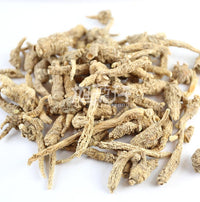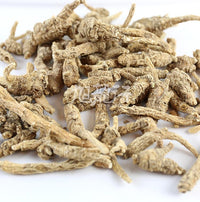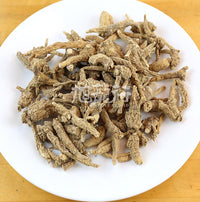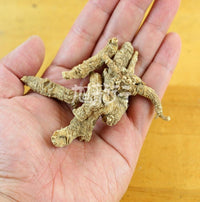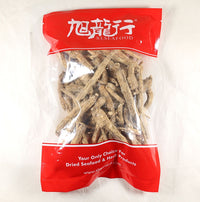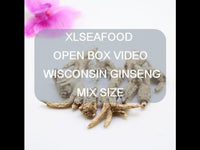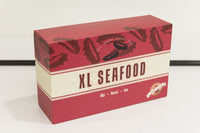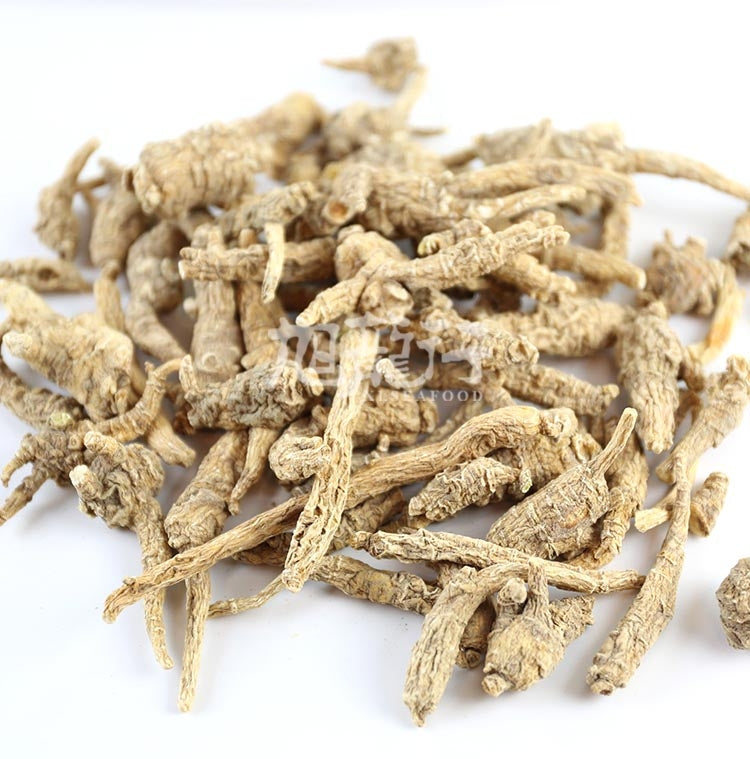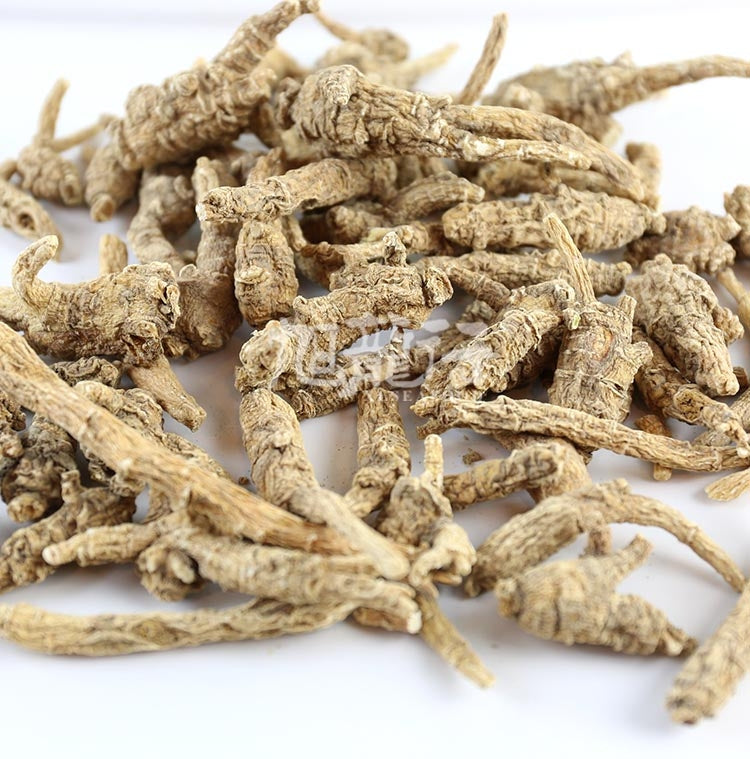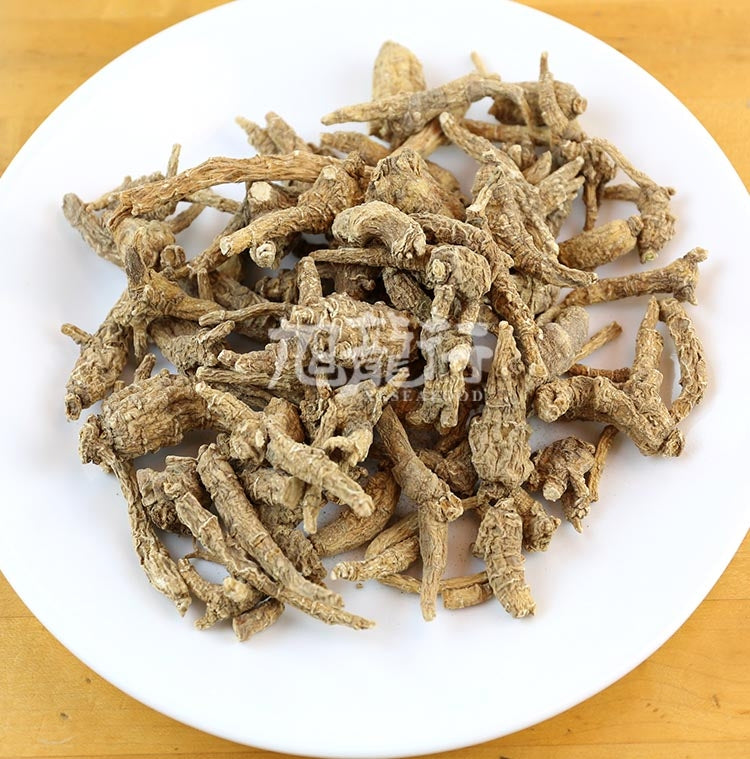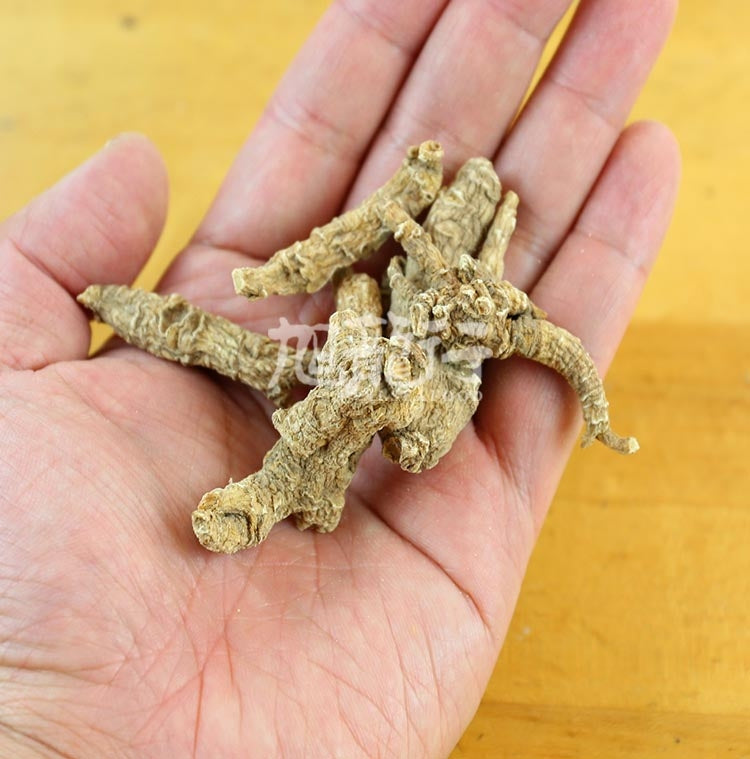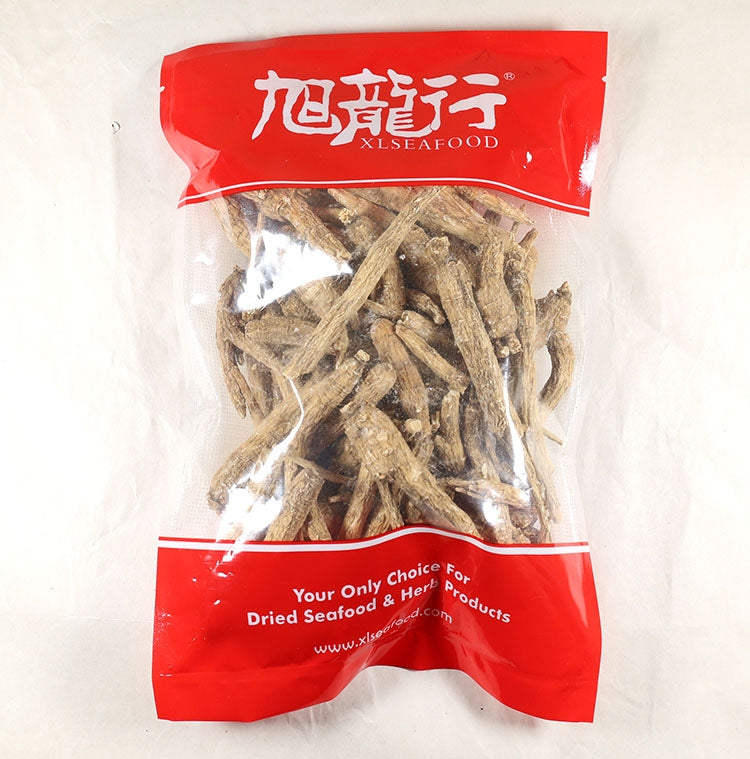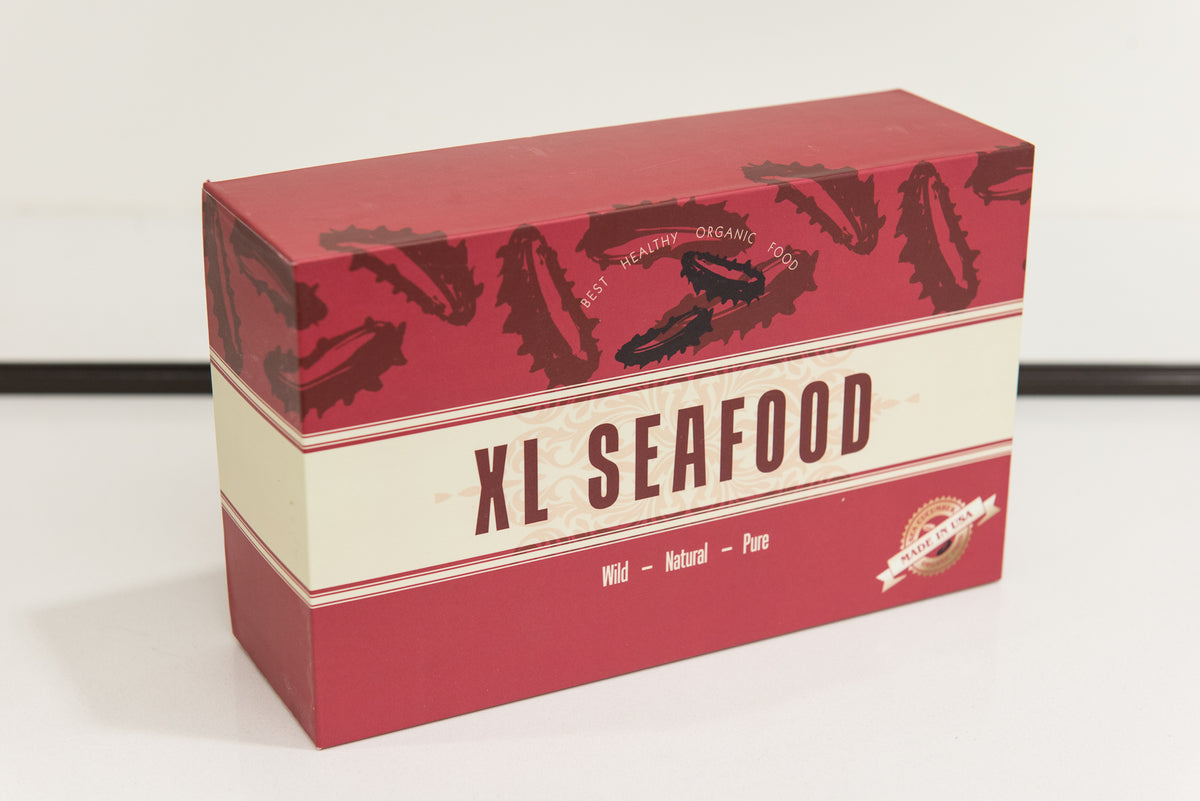XLSEAFOOD Sun Dried Wisconsin American Barrel Ginseng #100
-
Regular Price
-
$89.99
-
Sale Price
-
$89.99
-
Regular Price
-
$89.99
Sold Out
-
Unit Price
- per
- Regular Price
- $89.99
- Sale Price
- $89.99
- Regular Price
- $89.99
- Unit Price
- per
Powered by Salepify App
- 产品说明
- 规格说明
- 泡发方法
- 料理教程
产品说明
The difference between HUAQI ginseng and XIYANG ginseng
Ginseng from the North American continent, commonly known as HUAQI ginseng or XIYANG ginseng. The two, in fact, are one thing. But now it is customary to call HUAQI ginseng American ginseng, and Canadian ginseng called XIYANG ginseng. Panax quinquefolius, Panacis quinquefolis, is a perennial plant that grows 6 to 18 inches long and usually has 3 leaves of 3 to 5 each, up to 5 inches long.
Ginseng is best known for its roots. Traditionally used for medicinal purposes by Native Americans. Since the 18th century, roots began to be collected by "hunters" and sold to Chinese or Hong Kong traders. Since then, it can be said that American ginseng has been popular for hundreds of years.

The difference between American ginseng and Korean ginseng/Northeastern Chinese ginseng
Citi's participation in Asian ginseng is different, Asian ginseng refers to Korean ginseng and Jilin ginseng (scientific name Panax Ginseng CA Meyer), which are hot and dry, nourishing the sun and heating and raising the fire, suitable for people with cold and weak bodies to replenish qi and return to the mind, and dietary therapy needs to be matched with warm or benign ingredients; American ginseng and Asian ginseng, on the contrary, are cool, nourishing yin and not rising, replenishing but not dry, suitable for people with dry body to replenish qi and return to the mind, and the diet can be directly soaked in water, or with warm and hot ingredients.
The most important source of the dietary therapeutic properties of American ginseng is the two ingredients of ginsenosides and polysaccharides. Ginsenosides are one of the most important active ingredients in American ginseng and the most physiologically active substance. To date, a variety of saponin monomers have been extracted from American ginseng. Although there are many types of ginsenoside monomers, they are mainly triterpenoids, which have structural similarities with ginsenosides, but some are unique to American ginseng. Ginsenosides can effectively enhance the central nervous system, achieve calming and concentration, eliminate fatigue, enhance memory and other effects, and can be applied to insomnia, irritability, memory decline and Alzheimer's disease.
Ginseng polysaccharides. At present, dozens of polysaccharides have been isolated from ginseng, and ginseng polysaccharides mainly contain acidic heteropolysaccharides and dextran. Heteropolysaccharides are mainly composed of galactoaldehyde, galactose, rhamnose and arabinose, their structure is very complex, and they contain some polysaccharides with a molecular weight of 10,000-100,000. Ginseng polysaccharides have pharmacological effects such as regulating immunity, antitumor, anti-ulcer and hypoglycemic.

Wild American Ginseng – See what the Fish and Wildlife Service (FWS) has to say
There are many merchants who are attracting customers under the sign of wild American ginseng. Here's a reminder to consumers to be more attentive when consuming. In order to better understand the divisions and picking regulations of wild ginseng, we specially consulted the FWS introduction and regulations on wild ginseng and shared with you: American ginseng is a plant widely distributed throughout the North American continent, especially in Appalachia and Ozark (as well as adjacent forest areas such as Pennsylvania, New York and Ontario). However, wild American ginseng is now a rare species protected by the U.S. government. The so-called wild American ginseng on the market is not necessarily true, and it may not be possible to buy it!


U.S. FSW regulations
According to the US FSW regulations, wild ginseng under 5 years old is prohibited from picking and trading. Wild American ginseng that is more than 5 years old needs to apply for a license and permit in accordance with the relevant laws of the state where it is located before it can be harvested and traded.

At present, the American ginseng circulating in the US market is basically artificial ginseng. It is mainly produced in the United States, Ontario, Canada and Northeast China. Because the natural environment, soil and climate of these three places are not the same, the quality of ginseng grown is also different. In comparison, American ginseng is superior to Canadian ginseng and American ginseng from Chinese regions in terms of quality, composition, smell and taste. Wisconsin is the main producing region of American ginseng, and its ginseng production accounts for only about 15% of the world's production. Therefore, in the industry, the name American ginseng refers specifically to ginseng produced in the United States.

Schematic diagram of the life cycle of planting American ginseng, artificial planting of American ginseng will be subdivided into fast-growing ginseng and transplanted ginseng according to planting conditions. The former is an industrial plantation that uses artificial fertilizer to grow ginseng. This kind of ginseng has a short growth cycle, the ginseng is hypertrophied, and the color is white but light. The latter are artificially bred and then transplanted to simulated wild environments, where they are harvested after 3-4 years according to cultivation techniques. Compared with fast-growing ginseng, this ginseng has a slow growth time and is relatively "ugly and thin", but it has a rich taste and much higher nutritional and economic value.
How to tell good Wisconsin ginseng?
The general principle of choosing good American ginseng is to choose ugly: the main manifestations are looking very old, smelling very fragrant, eating very bitter, detailed as follows:

USDA standards have ratings specifically for American ginseng, but mainly in the way they are grown. (USDA ORGANIC certified organic or not)
According to the different parts and processing, American ginseng is mainly divided into four types: trunk, ginseng, ginseng and whiskers. The most important part of the trunk can be subdivided into pearl (pearl ginseng), round short/short branch (short branch ginseng, referred to as short bubble), and long branch according to the shape.

Traditional ginseng, wholesale ginseng is transported in barrels.

Long branches and short bubbles, will there be a difference in nutritional value?
It should be noted that American ginseng is an agricultural product, and various forms of ginseng are also produced in the same field.
Sandy soil produces many long branches, which is related to good soil water permeability. And clay has poor water permeability and high humidity.

Comparison of whole ginseng plants with long branches (left) and short bubbles (right).
The Canadian Ginseng Association has also done tests, ginsenosides are not related to morphology, but related to the age of growth, such as four years more than three years. It is worth noting that in the same year, ginseng, ginseng and ginseng festivals, which are usually not gifts, have higher medicinal value (ginsenosides) than the main trunk.
How to infer the age of American ginseng
The nutritional value and taste of American ginseng are not too much related to the form, but related to the age of ginseng. How to scientifically tell the age of American ginseng?

The American FSW has an introduction on how to judge the age of American ginseng.
Dry ginsengs see Sam Qi. There are obvious links (growth rings) on the Senti, each link. Starting from the ginseng root (the root represents 1-2 years), each additional section represents 1 more year. That is, if there are three sections, then American ginseng is at least 4-5 years old.

Non-artificially ripened American ginseng takes at least 1 year to grow leaves and 3 years to bloom and bear fruit. Good organic semi-wild Weizhou ginseng needs 3-4 years of cultivation before it can be picked.

Sliced American ginseng VS original ginseng
After slicing, American ginseng will be relatively simple to soak in water or eat, and it will be easier to taste.

The sliced ginseng is the same length
How to slice yourself?
Dried American ginseng is very hard, and without a professional cutter from a Chinese medicine store, it is a chore to slice it yourself. Here, we introduce you to some DIY slice tips.
The dry cutting method uses pruning horticultural shears (cutters) to cut American ginseng directly. This method is convenient and fast, the only drawback is that when slicing, the dried ginseng will break and break.
Steaming method
Steam the ginseng with water for 15 minutes and then slice.
American ginseng can be sliced and soaked in water or boiled in soup.
规格说明

泡发方法
威州花旗参食性偏凉,可以降燥去火,补充精力。
最简单,也是最有效的食用办法就是泡水饮用。
做法如下:
第一步:拆开旭龙行包装,将花旗参取出洗净。
如果是小号花旗参,可以直接煮水,若是大号和中号花旗参,则需要切片或者剁成小块,从而更容易让水分浸入参肉,使花旗参的有效成分溶入水中。
第二步:泡参
一般说来,花旗参在沸水中浸泡20分钟左右即可出味道。
注意:
可以将花旗参放入电热水壶中再烧水,水烧开后再浸泡10分钟左右即可饮用。
但是这样会在水开的过程中产生大量气泡,容易导致水汽溢出(如下图),所以如果万一要偷懒直接放参煮水,万不可将水注入的太满,以避免水汽溢出的情况:
完成的花旗参茶泛有淡淡的参香,入口微苦而回味甘甜。
真正的好的半野生威州花旗参,可以多次浸泡而仍保持参茶味香口感回甘。
浸泡后的野生花旗参,可以直接嚼碎服用,即便经过多次煮泡,参肉仍回味浓厚。
请注意:
若是人工养殖参或者化肥催生参,花旗参只能浸泡1-2回,再多浸泡则味道全无。
浸泡完成的人工参,嚼起来淡而无味,形同萝卜。
料理教程



